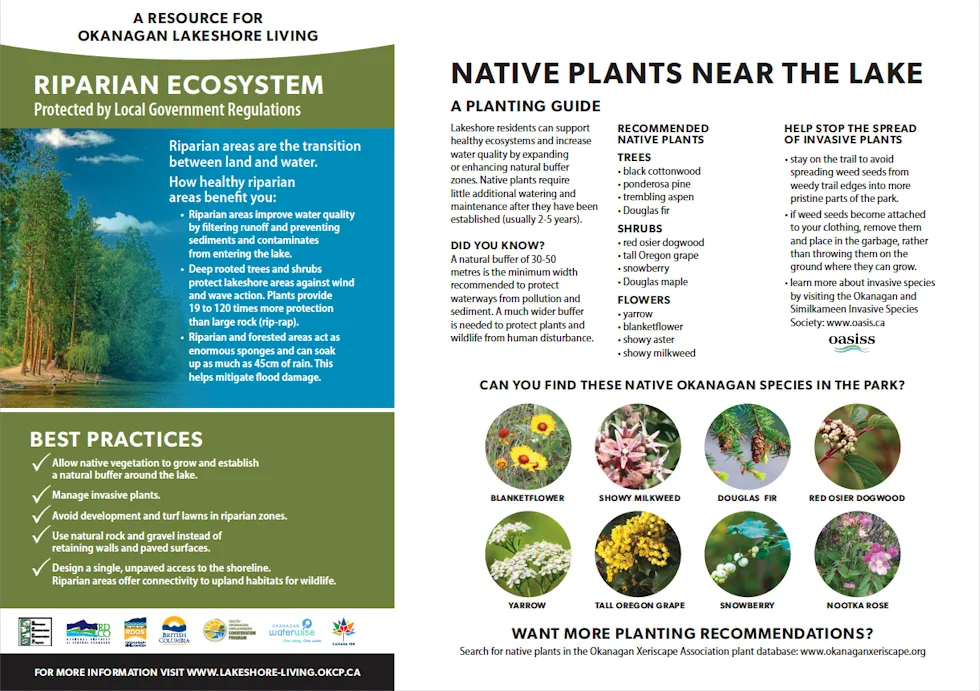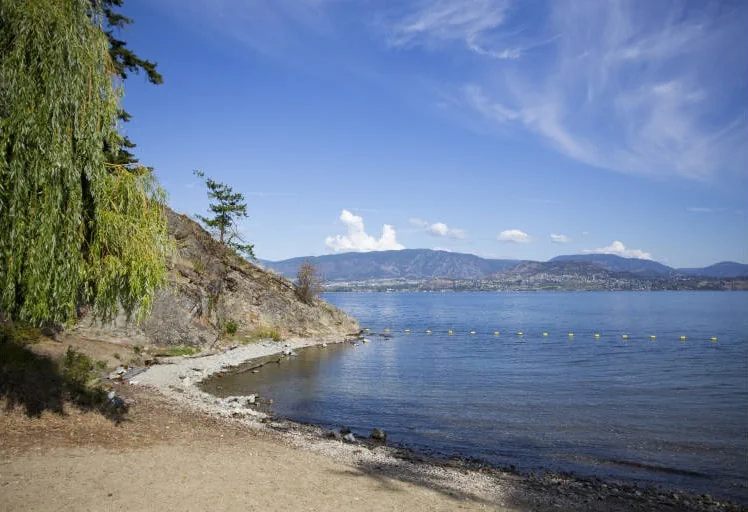Clean, plentiful fresh water and natural landscapes are a big reason why the Okanagan is such a great place to live. However, our lakes and surrounding natural areas are facing challenges, one being significant damage to the shoreline ecosystems caused by flooding. Damage caused by flooding strains sensitive lake ecosystems, destroys habitat, and has a detrimental effect on the health of our lakes.
Healthy lakeshore areas provide many benefits including:
- Aquatic plants form a flexible barrier along the waterfront that dampens the impact from wave action, reducing erosion.
- Undisturbed lakeshores provide safe spawning grounds for salmon and improve lake circulation.
- Natural shorelines provide aesthetic value by framing a more natural view from your home, and offer wildlife viewing opportunities.
As part of the protecting the shoreline of Okanagan Lakeshore Living project, last month OCCP supported on-the-ground habitat restoration activities on Bertram Creek in Kelowna. The restoration work will protect riparian and shoreline habitat at Bertram Creek Regional Park in Kelowna.
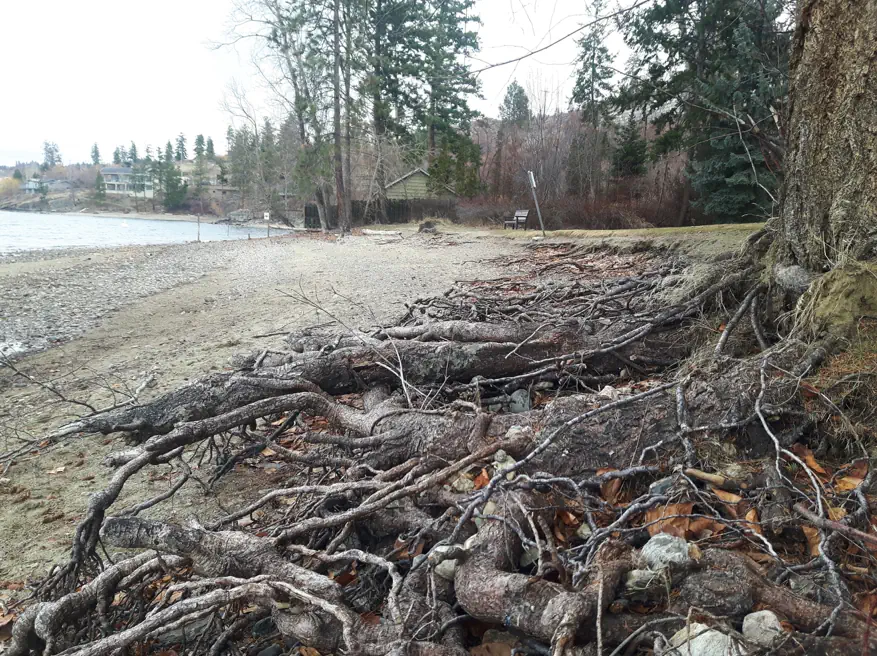
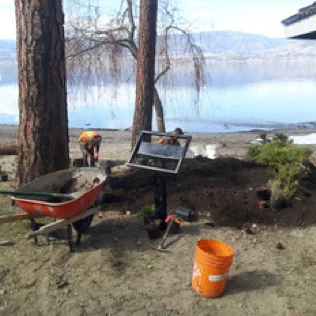
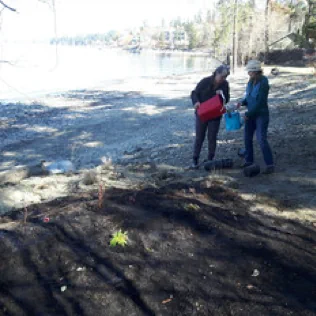
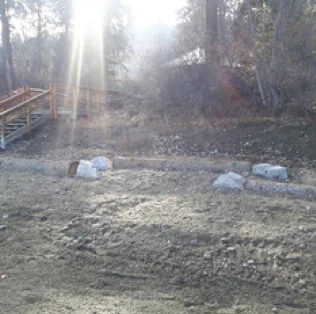
The restoration work demonstrates best practises for lakeshore management, adding natural reinforcement to the exposed tree roots to prevent loss of the large wildlife trees and further damage from future flooding.
OCCP collaborated with the Regional District of Central Okanagan to design the restoration and monitoring plan for the creek, ensuring the long-term success of the project.
Additionally, interpretive signage has been created and will be installed in Bertram Creek Regional Park. The signage will promote key information including how to protect foreshore habitat and the importance of maintaining habitat connectivity in the face of climate change.
Here are some best practices for lakeshore property management:
- Leave logs and leaves untouched, as these provide food and habitat for fish and wildlife.
- Limit disturbance to the shoreline and lakebed by foot and boat traffic. Never grade or move soils around the lakeshore.
- Keep pollutants and chemically treated wood products away for the lakeshore.
- Do not add fill, sand, or gravel to the natural shoreline.
Did you know?
- Only 41% of the Okanagan Lake shoreline remains natural, the majority has been developed. Currently, there is little protection to maintain these natural areas.
- Increased shoreline development from 2009 to 2016, has added 165 retaining walls, 164 docks, and 9 new marinas around the lake.
- The Okanagan Valley is biologically unique with some of the greatest concentrations of species and ecosystems in Canada. Many are found nowhere else in the country and in some cases the world. Lakeshore areas are the sandy shorelines and the lake beds below the present natural boundary.
For more information on best practises for lakeshore management and OCCP's efforts to protect lakeshores in the Okanagan, visit our Lakeshore Living site.
